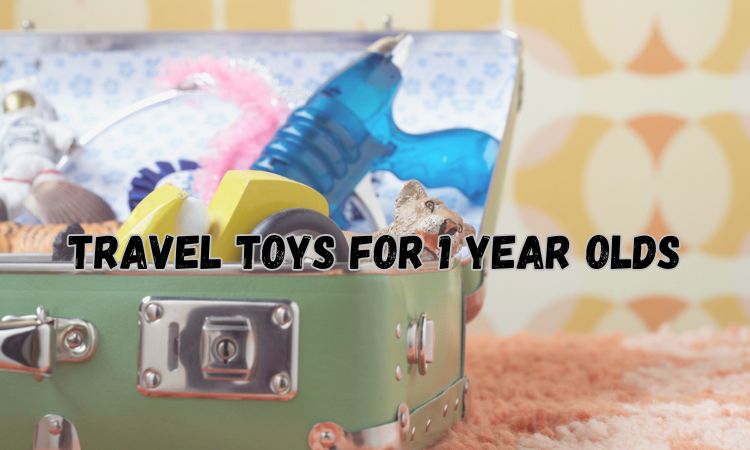How to Soothe a Newborn to Sleep: Tips and Tricks
Caring for a newborn often means adjusting to a whole new rhythm, especially when it comes to sleep. Babies aren't born knowing the difference between night and day, and their unpredictable sleep habits can leave parents feeling overwhelmed and exhausted. Understanding what's normal and how to support healthy sleep from the start can make those early weeks feel a little more manageable.
In this blog, you'll learn how newborns sleep, why their patterns are so different, and what you can do to soothe them more effectively. From calming routines to helpful feeding tips, it’s all about creating peaceful rest for your baby and for you.

Alt: How to soothe baby
Why Are Newborns Fussy at Night but Won't Sleep?
If your newborn seems especially fussy at night and just won’t settle down to sleep, you’re definitely not alone. Many parents go through this in the first few months, and while it can be exhausting, it’s usually part of normal development. There are a few common reasons your baby might be restless in the evenings:
l Day-Night Confusion: Newborns don’t yet understand the difference between day and night, so they may be more awake when you’re ready to sleep.
l Hunger: Their small stomachs mean they need to feed frequently, sometimes every 2–3 hours—even at night.
l Gas or Discomfort: Digestive issues like gas or reflux can make it hard for babies to settle, especially when lying flat.
l Overtiredness: An overtired baby can be harder to soothe. Skipped naps or too much stimulation can lead to fussiness.
l The “Witching Hour”: Some babies become fussy in the late afternoon or evening without a clear reason, which usually improves by 3 months.
How to Soothe a Newborn to Sleep?
So, what can you do when your little one is fussy or struggling to wind down? Let’s explore some soothing tips that can help ease your newborn into a peaceful sleep.
1. Create a Calming Sleep Environment
Newborns sleep best in a space that feels safe, quiet, and cozy — kind of like the womb. Keep the room dim with soft, warm lighting, and try to limit noise or sudden disruptions. A white noise machine or gentle lullabies can work wonders by creating a consistent sound that helps drown out household distractions.
Make sure your baby’s crib or bassinet is firm and free of loose blankets or toys to keep things safe. Keeping the room at a comfortable temperature, not too hot or cold, also helps little ones stay relaxed and snug throughout the night.
2. The 5 S’s Method by Dr. Harvey Karp
Dr. Harvey Karp’s popular “5 S’s” technique is loved by parents around the world for a reason. It taps into the calming reflex babies are born with. Here’s how it works:
l Swaddle: A snug swaddle mimics the feeling of the womb and helps prevent startle reflex.
l Side or Stomach Position: Hold your baby on their side or stomach in your arms (not for sleep), which can be comforting.
l Shush: Make a “shhh” sound or use white noise to soothe them. It mimics sounds they heard in the womb.
l Swing: Gentle, rhythmic movement like swaying or rocking can help calm a fussy baby.
l Suck: Offer a pacifier or allow them to nurse — sucking is naturally soothing.
Using these together can help settle a crying baby and encourage them to drift off more easily.
3. Stick to a Simple Bedtime Routine
Even though newborns are still adjusting to life outside the womb, introducing a bedtime routine early can help signal when it’s time to wind down. Keep it short and soothing. A warm bath, a gentle massage, a lullaby, or reading a short board book can all be part of the routine.
Some parents also like to include soft, engaging toys to gently ease their baby into sleep mode. A calming option like the Alilo baby rattle, which plays lullabies, natural sounds, and gentle stories, can be a sweet addition to the bedtime lineup.
Consistency is key. Doing the same calming steps each night helps your baby learn the difference between day and night. Over time, these little rituals become cues for sleep and can help reduce fussiness as your baby starts to settle more easily into bedtime.

Alt: Alilo baby rattle
4. Motion Can Help, but Use It Wisely
Gentle motion is one of the oldest tricks in the book, and for good reason. Rocking, swaying, or even using a baby swing can mimic the movement babies felt in the womb, which is incredibly soothing. A stroller walk or car ride can also do the trick when your baby just won’t settle.
That said, it’s best not to rely on motion every time. If your baby always needs movement to fall asleep, they may struggle to settle without it later. Try using motion as a soothing tool rather than a sleep crutch, especially as your baby gets older.
5. Feeding Schedule for Better Baby Sleep
A well-fed baby is usually a happier, sleepier baby. Newborns need to feed often, about every 2 to 3 hours, and keeping those feedings consistent can help your baby settle into a more predictable rhythm. Try offering full feeds instead of frequent small snacks, so your baby feels satisfied and sleeps longer between wake-ups.
Pay attention to your baby’s cues. If they’re waking and fussing shortly after feeding, it might be gas or discomfort instead of hunger. A gentle burp or cuddle can go a long way. Over time, a balanced feeding and sleeping pattern will support better rest for both baby and you.

Alt: Crying baby
When to See Doctors?
Most newborn sleep issues are normal and improve with time, but if your baby remains unusually fussy despite soothing, feeding, and a calm sleep environment, it may signal something more. Here are a few red flags to watch for:
1. Your baby cries for hours at a time, every day, and nothing seems to soothe them.
2. They show signs of illness like fever, rash, vomiting, or diarrhea.
3. Sleep has changed suddenly after being fairly consistent.
4. They seem to be in pain or discomfort, especially after feedings.
5. They’re not feeding well or aren’t gaining weight properly.
Trust your instincts. If something doesn’t feel right, it’s always okay to call your pediatrician for advice or peace of mind.
Conclusion
Helping a newborn sleep doesn’t mean following a rigid formula. It’s about observing their unique patterns and using gentle, consistent techniques to soothe them. By creating a calming environment, practicing the 5 S’s, and introducing simple routines, you’ll gradually find how to soothe a newborn to sleep. Remember, every newborn is different, so patience and flexibility are key. Over time, you’ll help your baby develop healthier sleep habits, making nights more restful for everyone.
FAQs about How to Soothe a Newborn to Sleep
How to calm a fussy newborn at night?
First, ensure they’re not hungry or uncomfortable. Try swaddling them securely, using a white noise machine, or gently rocking them in a dimly lit room. A warm bath or a soothing lullaby can also help calm fussiness before sleep.
How do you settle a newborn to sleep at night?
Establish a consistent bedtime routine that includes activities like a warm bath, quiet time, and a soft lullaby. Keep the environment dark and calm. Offer a feeding just before bed and use gentle motion or white noise to help them relax.
What are the 5 stages of newborn sleep?
Newborn sleep includes two main types: active (REM) sleep and quiet (non-REM) sleep. Quiet sleep includes stages of drowsiness, light sleep, deep sleep, and very deep sleep. During active sleep, babies tend to move more, their eyes shift rapidly under closed lids, and they’re more easily awakened.







Share and get 5% off!
Simply share this product on one of the following social networks and you will unlock 15% off!